Aarti Sathyanarayana
Extending Stress Detection Reproducibility to Consumer Wearable Sensors
May 09, 2025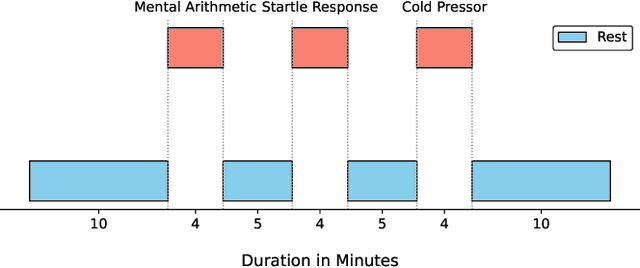
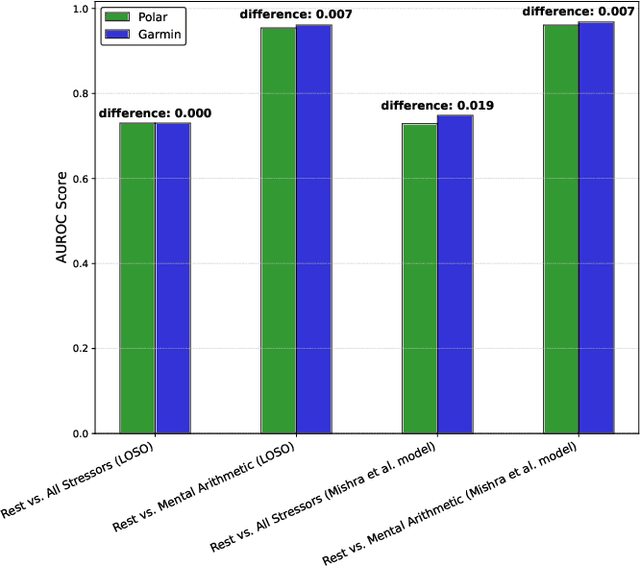
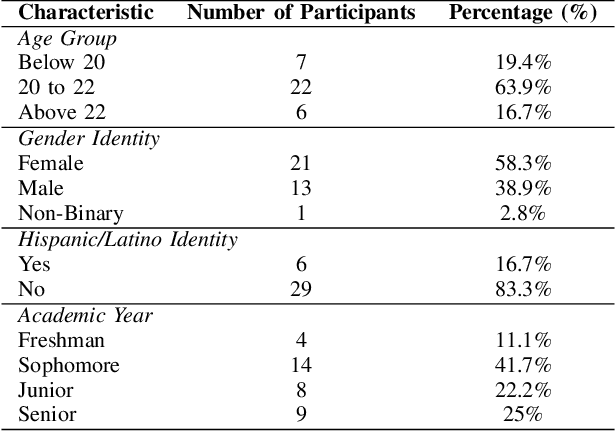
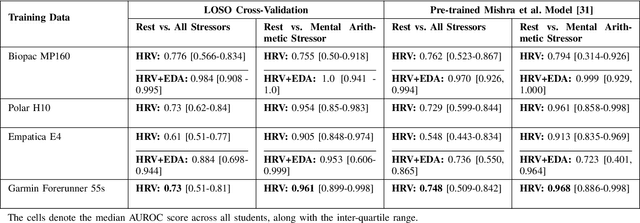
Abstract:Wearable sensors are widely used to collect physiological data and develop stress detection models. However, most studies focus on a single dataset, rarely evaluating model reproducibility across devices, populations, or study conditions. We previously assessed the reproducibility of stress detection models across multiple studies, testing models trained on one dataset against others using heart rate (with R-R interval) and electrodermal activity (EDA). In this study, we extended our stress detection reproducibility to consumer wearable sensors. We compared validated research-grade devices, to consumer wearables - Biopac MP160, Polar H10, Empatica E4, to the Garmin Forerunner 55s, assessing device-specific stress detection performance by conducting a new stress study on undergraduate students. Thirty-five students completed three standardized stress-induction tasks in a lab setting. Biopac MP160 performed the best, being consistent with our expectations of it as the gold standard, though performance varied across devices and models. Combining heart rate variability (HRV) and EDA enhanced stress prediction across most scenarios. However, Empatica E4 showed variability; while HRV and EDA improved stress detection in leave-one-subject-out (LOSO) evaluations (AUROC up to 0.953), device-specific limitations led to underperformance when tested with our pre-trained stress detection tool (AUROC 0.723), highlighting generalizability challenges related to hardware-model compatibility. Garmin Forerunner 55s demonstrated strong potential for real-world stress monitoring, achieving the best mental arithmetic stress detection performance in LOSO (AUROC up to 0.961) comparable to research-grade devices like Polar H10 (AUROC 0.954), and Empatica E4 (AUROC 0.905 with HRV-only model and AUROC 0.953 with HRV+EDA model), with the added advantage of consumer-friendly wearability for free-living contexts.
Sleep Staging from Airflow Signals Using Fourier Approximations of Persistence Curves
Nov 12, 2024

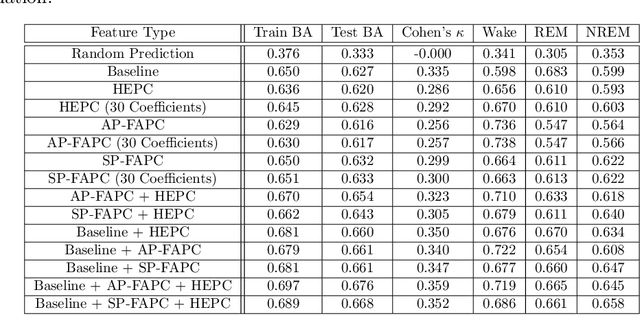
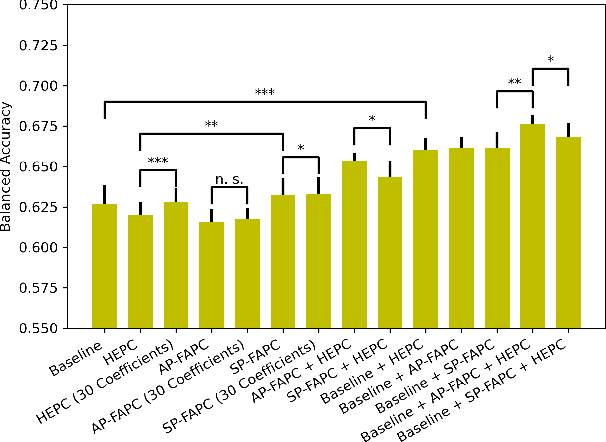
Abstract:Sleep staging is a challenging task, typically manually performed by sleep technologists based on electroencephalogram and other biosignals of patients taken during overnight sleep studies. Recent work aims to leverage automated algorithms to perform sleep staging not based on electroencephalogram signals, but rather based on the airflow signals of subjects. Prior work uses ideas from topological data analysis (TDA), specifically Hermite function expansions of persistence curves (HEPC) to featurize airflow signals. However, finite order HEPC captures only partial information. In this work, we propose Fourier approximations of persistence curves (FAPC), and use this technique to perform sleep staging based on airflow signals. We analyze performance using an XGBoost model on 1155 pediatric sleep studies taken from the Nationwide Children's Hospital Sleep DataBank (NCHSDB), and find that FAPC methods provide complimentary information to HEPC methods alone, leading to a 4.9% increase in performance over baseline methods.
Detection of Sleep Oxygen Desaturations from Electroencephalogram Signals
May 08, 2024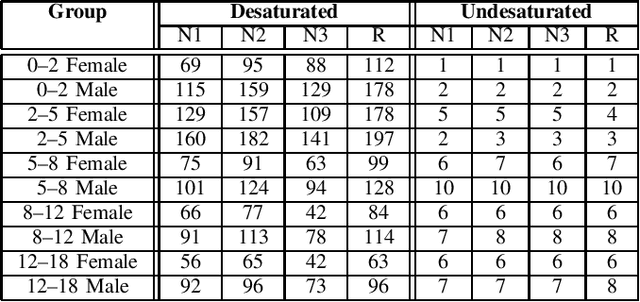
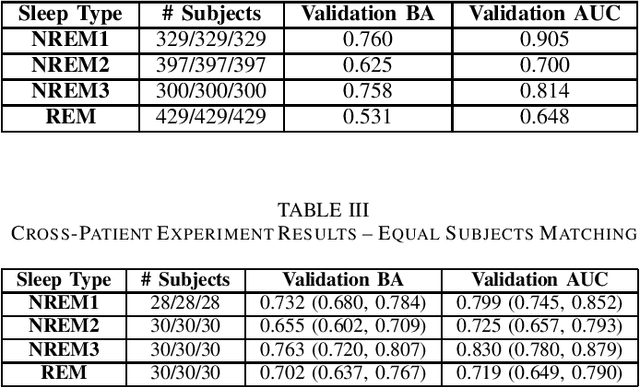


Abstract:In this work, we leverage machine learning techniques to identify potential biomarkers of oxygen desaturation during sleep exclusively from electroencephalogram (EEG) signals in pediatric patients with sleep apnea. Development of a machine learning technique which can successfully identify EEG signals from patients with sleep apnea as well as identify latent EEG signals which come from subjects who experience oxygen desaturations but do not themselves occur during oxygen desaturation events would provide a strong step towards developing a brain-based biomarker for sleep apnea in order to aid with easier diagnosis of this disease. We leverage a large corpus of data, and show that machine learning enables us to classify EEG signals as occurring during oxygen desaturations or not occurring during oxygen desaturations with an average 66.8% balanced accuracy. We furthermore investigate the ability of machine learning models to identify subjects who experience oxygen desaturations from EEG data that does not occur during oxygen desaturations. We conclude that there is a potential biomarker for oxygen desaturation in EEG data.
Impact of Physical Activity on Sleep:A Deep Learning Based Exploration
Jul 24, 2016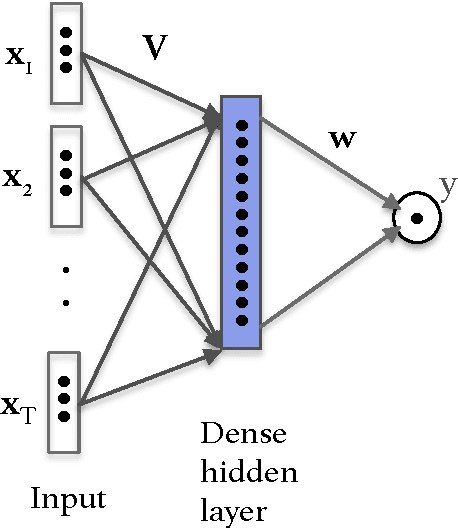
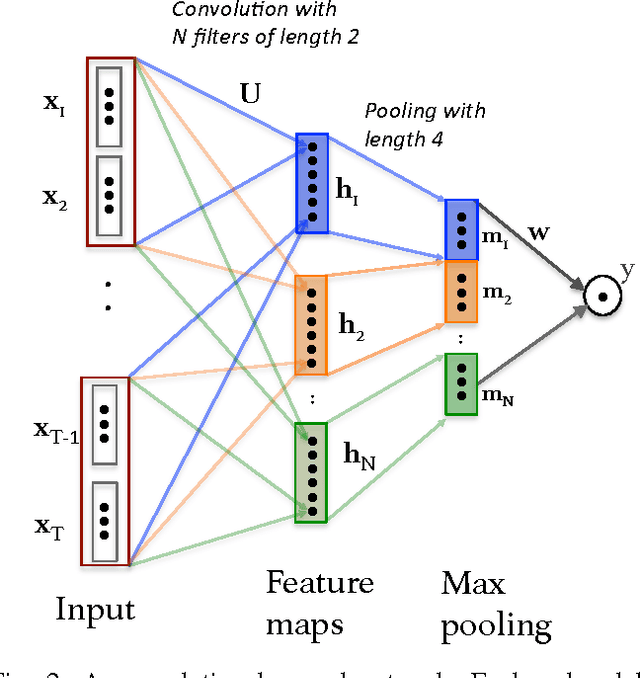
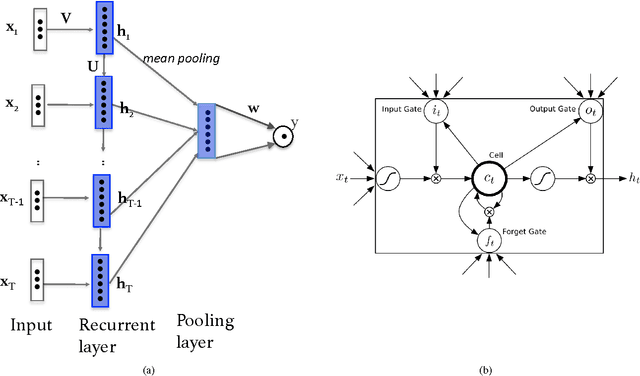
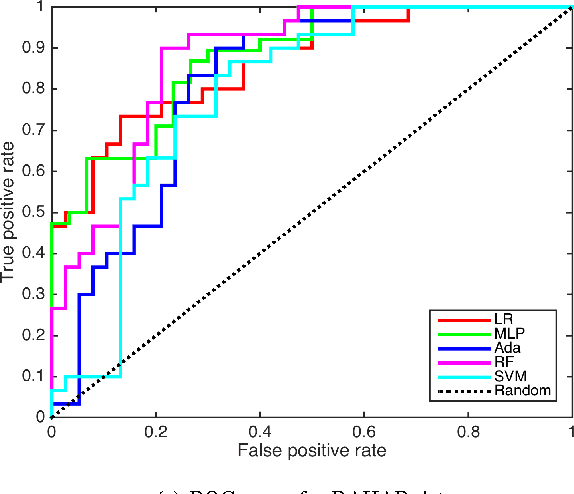
Abstract:The importance of sleep is paramount for maintaining physical, emotional and mental wellbeing. Though the relationship between sleep and physical activity is known to be important, it is not yet fully understood. The explosion in popularity of actigraphy and wearable devices, provides a unique opportunity to understand this relationship. Leveraging this information source requires new tools to be developed to facilitate data-driven research for sleep and activity patient-recommendations. In this paper we explore the use of deep learning to build sleep quality prediction models based on actigraphy data. We first use deep learning as a pure model building device by performing human activity recognition (HAR) on raw sensor data, and using deep learning to build sleep prediction models. We compare the deep learning models with those build using classical approaches, i.e. logistic regression, support vector machines, random forest and adaboost. Secondly, we employ the advantage of deep learning with its ability to handle high dimensional datasets. We explore several deep learning models on the raw wearable sensor output without performing HAR or any other feature extraction. Our results show that using a convolutional neural network on the raw wearables output improves the predictive value of sleep quality from physical activity, by an additional 8% compared to state-of-the-art non-deep learning approaches, which itself shows a 15% improvement over current practice. Moreover, utilizing deep learning on raw data eliminates the need for data pre-processing and simplifies the overall workflow to analyze actigraphy data for sleep and physical activity research.
Robust Automated Human Activity Recognition and its Application to Sleep Research
Jul 19, 2016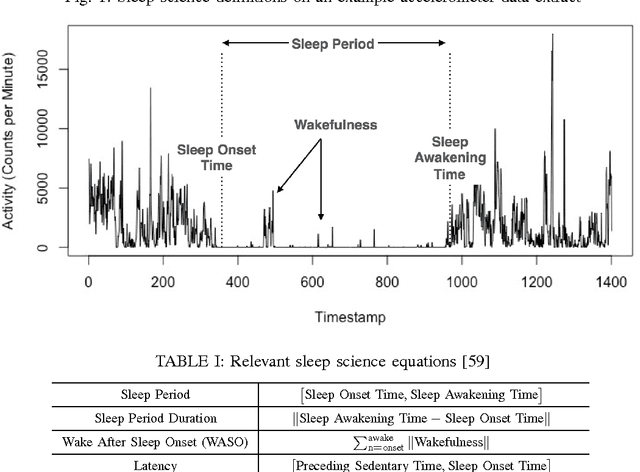
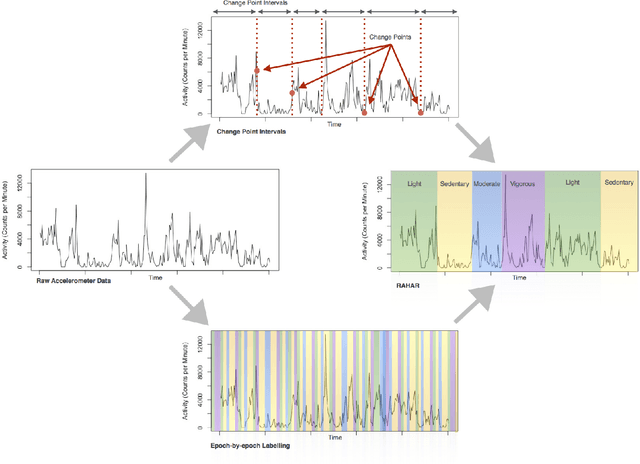
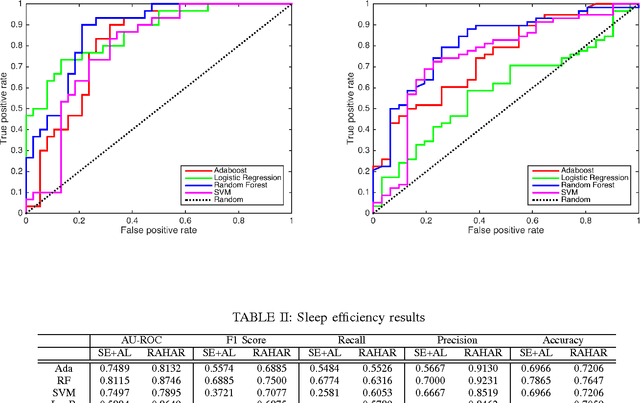
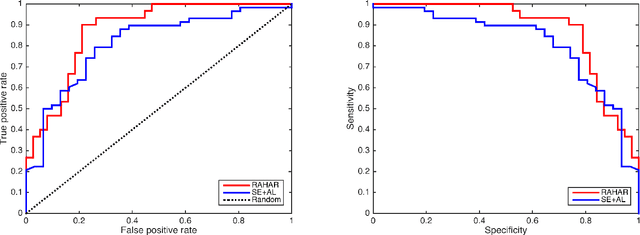
Abstract:Human Activity Recognition (HAR) is a powerful tool for understanding human behaviour. Applying HAR to wearable sensors can provide new insights by enriching the feature set in health studies, and enhance the personalisation and effectiveness of health, wellness, and fitness applications. Wearable devices provide an unobtrusive platform for user monitoring, and due to their increasing market penetration, feel intrinsic to the wearer. The integration of these devices in daily life provide a unique opportunity for understanding human health and wellbeing. This is referred to as the "quantified self" movement. The analyses of complex health behaviours such as sleep, traditionally require a time-consuming manual interpretation by experts. This manual work is necessary due to the erratic periodicity and persistent noisiness of human behaviour. In this paper, we present a robust automated human activity recognition algorithm, which we call RAHAR. We test our algorithm in the application area of sleep research by providing a novel framework for evaluating sleep quality and examining the correlation between the aforementioned and an individual's physical activity. Our results improve the state-of-the-art procedure in sleep research by 15 percent for area under ROC and by 30 percent for F1 score on average. However, application of RAHAR is not limited to sleep analysis and can be used for understanding other health problems such as obesity, diabetes, and cardiac diseases.
 Add to Chrome
Add to Chrome Add to Firefox
Add to Firefox Add to Edge
Add to Edge